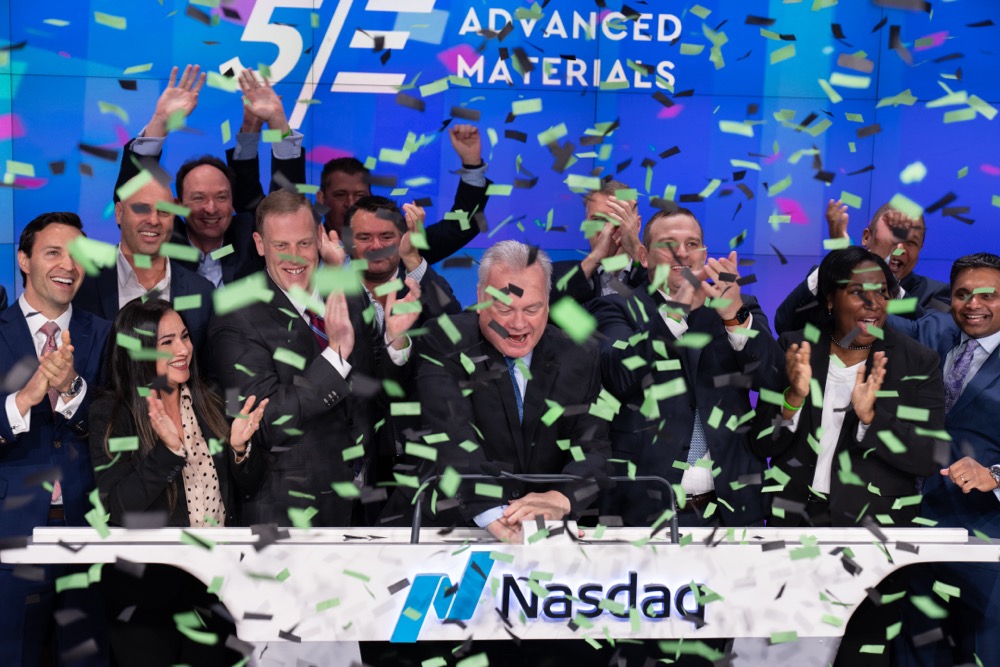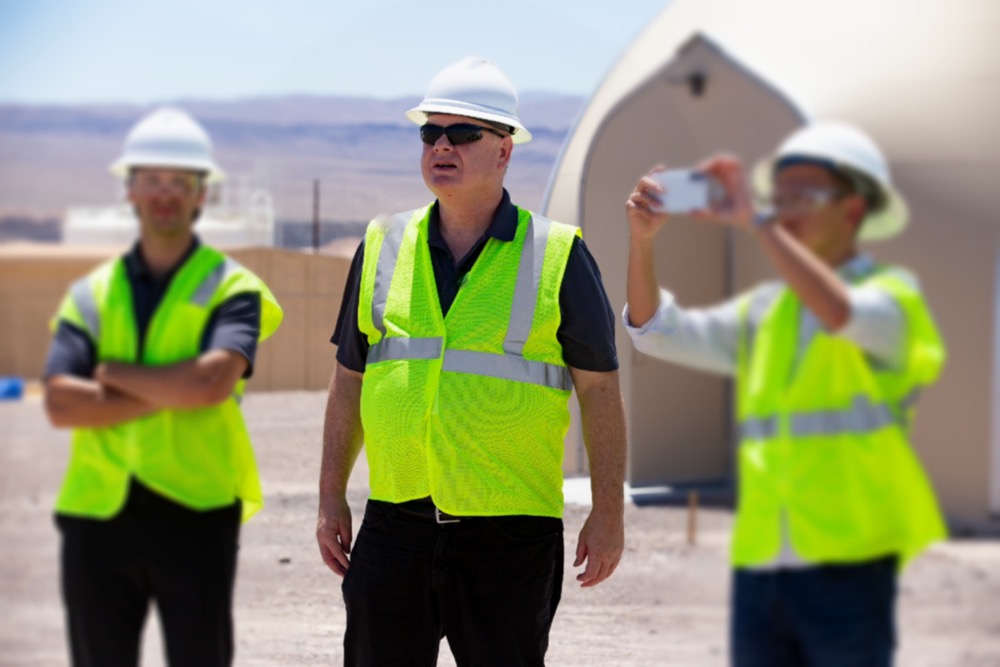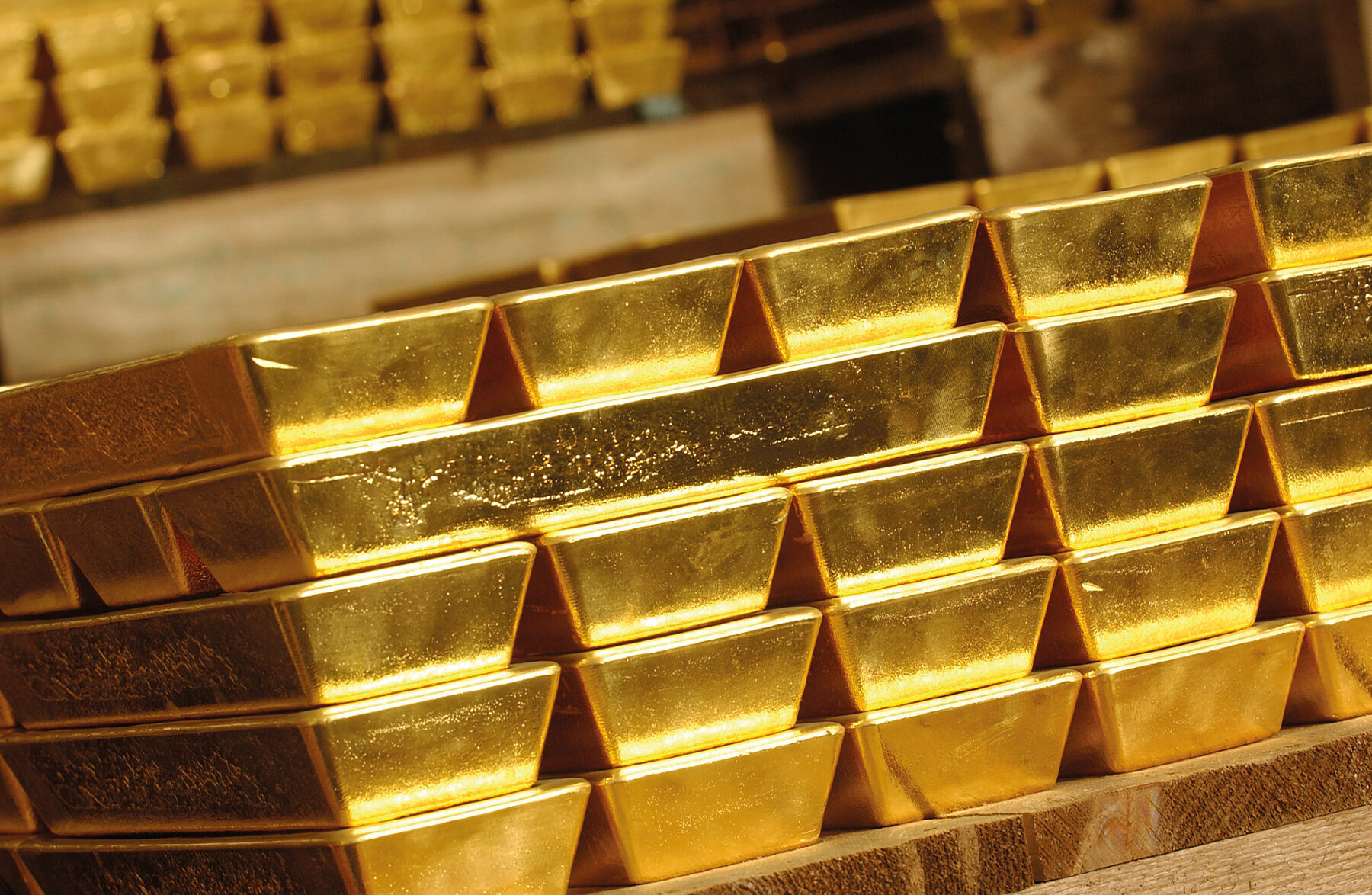Forget rare earths, boron is the critical mineral to track

Rare earths have captured the imagination of the broader public:
The 17 elements served as the basis of a top-selling video game, provided a plot point for a popular Netflix drama, sparked a drawn-out WTO dispute and were used to slam Barack Obama.
Even Kim Jong-Un has a finger in the pie.
Boron, not so much. But boron’s not boring. Far from it.
It shares many of the family traits of rare earths and it’s also close to mineral du jour lithium.
Comes out in the wash
Boron, the fifth-lightest element, in its many forms has a wider range of advanced applications than both rare earths and lithium.
You can already find 40-50 kilograms of boron materials in the average EV, including in permanent magnets, high-strength steel chassis, ceramic brakes, dashboard screens, body panels and thermal and acoustic insulation. The renewable energy sector uses boron in permanent magnets and fibreglass for wind turbine blades and borosilicate glass for solar panels.
Boron carbide is the second-hardest material behind only diamonds and is used by militaries for, among others, tank and body armour and drones. Its heat and corrosion resistance provide ceramics made with boron compounds ideal for the nuclear energy and aerospace industries. Boron is also extensively used in the fertiliser industry.
Boron is a semiconductor. Atom flat borophene may get the world to wearable and transparent electronics (finally!). And yes, you can do your laundry with it.
Boron is rare on earth
Rare earths aren’t rare either – MINING.COM sister company Miningintelligence counts nearly 300 active rare earth projects around the world. China’s share of rare earth mine supply has fallen from 95% to 54% in just five years.
While according to one popular twitter user, lithium is “just like widely available” and “pretty much everywhere,” Boron is not.
Boron does not occur in its elemental state and for an economical deposit to form you need a volcano, evaporated water and a fault line, which explains the highly concentrated nature of boron production and reserves.
Smith and Atatürk
Turkey’s state-owned Eti Maden and Rio Tinto control roughly 85% of the global 4.5 million tonnes per annum supply. Eti Maden, which traces its history back to a 1935 decree by Atatürk alone accounts for nearly two-thirds of global output from just four mines.
Rio’s historic mine is in Boron, California, home of the famous 20 Mule Team. The currently producing mine dates back to 1927 and Rio expects it to reach end of life in 2042. The first borax mine in the region was established by Francis Smith near Death Valley in 1872.
Turkey is also host to 70% of the world’s reserves, according to USGS. And, in what has become a central issue in the critical mineral space, 80% of downstream boron carbide processing takes place in China.
Doing a lithium
Into this gap steps 5E Advanced Materials. The company owns Fort Cady, the world’s largest conventional boron deposit, located in the Mojave Desert in Southern California.
The deposit, not far from Rio’s boron mine, was discovered in the late 1970s and during the 1990s a small-scale plant operated for a few years producing colemanite. Without much activity at the site since then and after changing ownership a few times 5E, then American Pacific Borates, acquired Fort Cady in 2017.
5E’s CEO Henri Tausch tells MINING.COM the company’s aim is to become a fully vertically integrated company, with a focus on what it terms boron+ materials:
“20 years ago [when Fort Cady ceased operations] demand for boron was limited to ‘daily applications’ like detergents, glass and fertiliser – now future facing applications are driving the market.”
The company has been busy on boron+ including research partnerships with Georgetown University on permanent magnets and just last week another with Boston College to develop boron-based solar energy systems.
The green energy transition and EVs are doing to boron what they did to lithium a decade ago. According to Credit Suisse Equity Research, the market will double by the end of the decade, mostly driven by decarbonisation applications.
The solution
Tausch, who joined 5E from TSX-listed energy infrastructure firm Shawcor after 17 years at US giant Honeywell, says a vertically integrated producer not only improves margins, but also lowers the company’s environmental footprint by creating a ‘Made in America’ supply chain.
Selling value added products – which for boron number over a 100 and continue to expand – should also boost the company market valuation as a chemical processor versus that of being a miner, says Tausch.

With a resource base of 109 million tonnes at 11.6% boric acid and 324ppm lithium, according to new SEC S-K 1300 reporting guidelines that came into effect last year, at full tilt Fort Cady is set to produce around 500,000 tonnes of boric acid (ratio to elemental boron is 5.72) a year through a process of in-situ extraction.
A water-based solution which interacts with colemanite to form boric acid is injected, which cuts down on costs significantly versus open pit mining. Eti Maden also exploits colemanite in Turkey, but with traditional truck and shovel operation.
The p-word
Mechanical construction of a small-scale plant to produce roughly 2,000 tonnes is set to be completed by the end of the year. The plant will enable the company to optimise engineering processes, provide material for prospective off-take agreements and research and development for its value added projects, says Tausch.
Even with everything Fort Cady has going for it, the whole undertaking can still grind to a halt. It’s mining in the US so that means permits, permits and more permits.
Tausch says the company has key federal permits already in place from the EPA (for the injection process) and the Bureau of Land Management. At the state level water and emissions permits have also been granted while outstanding construction permits should be a formality says Tausch.
Billion and half for boron
While E5 has not disclosed any capex figures, those put forth by analysts of around $1.5 billion is “in the ballpark” says Chance Pipitone, in charge of 5E’s corporate development and investment relations.
5E expects to ramp up to roughly 250,000 tonnes boric acid and several thousand tonnes of lithium carbonate by 2024/2025 which will provide internal financing. Pipitone says the company is looking at a range of options outside debt, equity and customer finance including government grants and loans.
While boron is not on the 2022 official US government list of so-called critical minerals due to ample US domestic production currently, in February this year Fort Cady was designated as ‘Critical Infrastructure’ by the US Cybersecurity and Infrastructure Security Agency (CISA). US nuclear plants have a similar designation.
5E could access some of the $750 million available through the Defense Production Act which the Biden administration invoked in March and thanks to its lithium plans, 5E could also possibly tap the Advanced Technology Vehicles Manufacturing Loan Program.
A critical mineral determination could open the door to $2 billion in incremental funding from the Energy Department, Pipitone told Bloomberg in April, adding that 5E “could fund almost 70% of the project with an ATVM loan program.”
Paying a price
Tausch says boric acid prices have nearly doubled in the past year to around $1,200 a tonne, although the industry remains opaque and price discovery is mainly via the company’s network of industry insiders. Tausch does not foresee transparency improving much given the structure of the market.
5E has been busy since its March listing. In June the company inked a letter of intent to supply boron to Corning, the world’s largest technical glass manufacturer. In August 5E landed a $60 million investment from Dallas-based hedge fund Bluescape Energy Partners.
And then there were six
5E does not have the emerging boron mine development field to itself however.
Tausch says while there are maybe 100 active projects around the world developing lithium mines, for boron the number is only six, most in early stages and smaller in scale.
Frontrunner Ioneer and Sibanye-Stillwater’s lithium and boron Rhyolite Ridge project in Nevada is in the definitive feasibility stage with capacity for 174,000 tonnes of boron. Production can start as early as 2023, provided some buckwheat doesn’t get in the way.
Three projects are in Serbia: Rio’s stalled Jadar lithium project which includes output of 284,000 tonnes boric acid equivalent from a novel mineral, the Valjevo project being advanced by Euro Lithium + Borates and Erin Ventures’ Piskanja with 163,000 tonnes capacity.
Bacanora’s small scale El Cajon colemanite project in Mexico has not moved beyond its 2013 preliminary economic assessment.
Lithium nice to have
“Typically when you find boron you find lithium, not really the other way around,” says Tausch.
Fort Cady also has the potential to become a significant supplier of lithium in the US (although Tausch admits it doesn’t take much considering the dearth of lithium projects in the country) targeting some 5,000 tonnes of carbonate at full production around 2027.
While most metals are significantly below highs reached in March, lithium carbonate prices have held up and continue to trade north of $70,000 a tonne in China, that’s up from $6,000 a couple of years ago.
Dual-listed duel with duopoly
The company, now based in Houston, dual-listed on the Nasdaq (NASDAQ:FEAM) in mid-March where it’s worth some $1.2 billion and maintains a listing in Australia (ASX:5EA).
Like for most mining exploration stocks, the past six-months haven’t been kind to valuations and 5E is down 50% since listing.
Institutional investors are led by Blackrock, Vanguard and Geode which together owned 12% of the company at the end of June, according to Factset. Goldman Sachs has a nominal stake. 5E’s US ownership is now around 34% of the total and climbing.
Margins call
A report from Baird Equity Research sees 5E in 2027 as a $672 million per year company at boric acid prices of $1,200 and lithium carbonate at $15,000 affording the company EBITDA margins north of 60%.
This model does not take into account any downstream boron products 5E may produce and at the assumed prices for lithium and boron, could be considered conservative.
Baird has a price target of $36 per share, representing upside of 114%. Baird cautions investors that the duopolistic and opaque nature of the boron market make supply and demand dynamics and price trends difficult to monitor, creating evaluation risk.
More News
Myanmar’s tin-rich Wa State delays mining resumption meeting after earthquake
A tin trader said it was difficult to predict when operations could resume.
April 03, 2025 | 08:43 am
The race to get gold bars into the US is screeching to a halt
US premiums for precious metals tumbled after a list of exemptions from the tariffs included gold, silver, platinum and palladium.
April 03, 2025 | 06:59 am
{{ commodity.name }}
{{ post.title }}
{{ post.excerpt }}
{{ post.date }}



3 Comments
Ken Towe
Boron or lithium. It doesn’t matter because just like iron or copper fossil fuels will be needed to mine them and use them. There are no viable alternatives when it comes to transportation in a world making a transition to electric transportation. What that means is the “urgent” pressure to reduce emissions from those fuels to zero by 2050 is counterproductive. Misguided?
Lorenzo Payan
Me gustaria recibir info de digestion de metales pesados por bacterias
Dr. Hujjathullah M.H.B. Sahib
The move to harvest lithium as a by-product of Boron mining is very smart given the prospective spiked up future productions of EV and other green applications. The danger of unwittingly expanding carbon-based fuel in the mining of Boron can be rapidly mitigated by expanding and switching to nuclear power and this shouldn’t be a problem within the US. As for Eti Maden sticking to its shovels at least for the immidiate future; this is understandable because the Turks are naturally cautious of needless environmental tamperings that may result from employing water-injection methods because the problems that attend fracking may also rear its head here too !